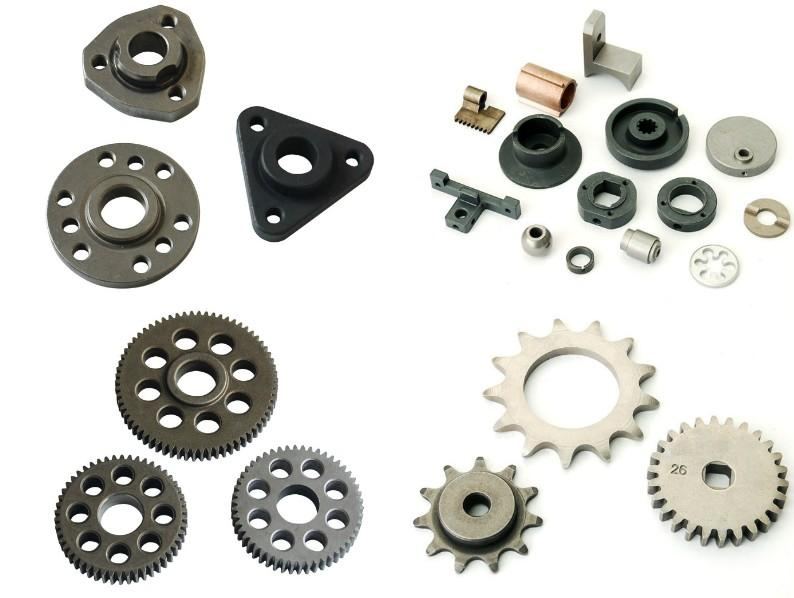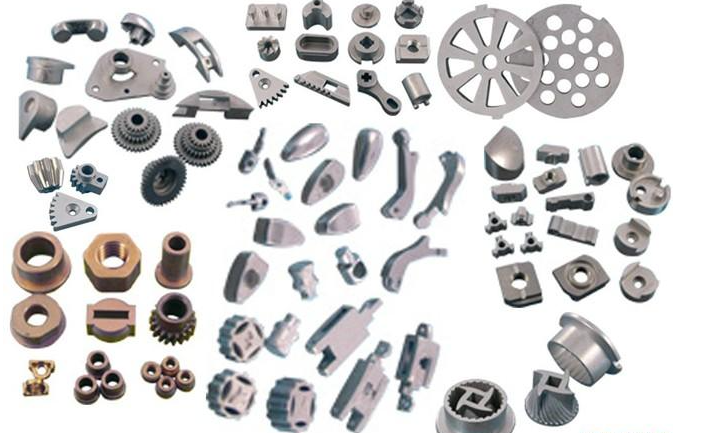Powder metallurgy products usually refer to products made from metal powders (or mixtures of metal and non-metal powders) through a forming and sintering process. Powder metallurgy products are usually used in a wide range of applications, from general machinery manufacturing to precision instruments; from hardware tools to large machinery; from the electronics industry to motor manufacturing; from the civil industry to the military industry; from general technology to cutting-edge high technology, all of which can be seen in powder metallurgy products.
Advantages of Powder Metallurgy
The advent of powder metallurgy has significantly broadened the range of powder metallurgical products Most refractory metals and their compounds, pseudo-alloys, and porous materials can only be manufactured using powder metallurgy methods.
Powder metallurgy reduces the loss of metal compared to melt casting methods, thus reducing production costs. Because powder metallurgy can be pressed into a final size billet with little or no subsequent machining, it can result in significant metal savings and lower product costs. When manufacturing products by the powder metallurgical method, the metal loss is only 1-5%, whereas when produced by the general melt casting method, the metal loss may reach 80%.
Since the powder metallurgy process does not melt the material during the production of the material, there is no fear of mixing in impurities brought about by crucibles, deoxidisers, etc., while sintering is generally carried out in a vacuum and reducing atmosphere without fear of oxidation and without any contamination of the material, so it is possible to produce high purity materials.
At the same time, powder metallurgy is suitable for the production of products of the same shape and in large quantities, especially for products with high processing costs, such as gears, which can be manufactured by powder metallurgy to significantly reduce production costs.
Disadvantages of Powder Metallurgy
Powder metallurgy also has some disadvantages, mainly in the form of internal porosity of powder metallurgy products; the strength of ordinary powder metallurgy products is lower than the corresponding forgings or castings (about 20%-30% lower); as the forming process of powder is much less liquid than liquid metal, so there are certain restrictions on the shape of the product structure; press forming requires high pressure, and thus the products are limited by the capacity of the pressing equipment, etc.; press mold High cost, generally only suitable for batch or mass production. For metal powders: the quality of the final product is difficult to control freely; metal powders are expensive; powders do not obey the laws of hydraulics and therefore have some limitations on the structural shape of the product.

Applications of Powder Metallurgy Products
The automotive industry is the largest and fastest growing market for powder metallurgical products. Currently around 70% of the world’s steel powders end up in the automotive industry.
The overall demand for powder metallurgical products is also further increased by the popularity and replacement of household appliances.
More than half of the various gears used in most power tools are powder metallurgical parts, as well as some bushings, ratchets, etc. Therefore it is also a major application area for powder metallurgical parts. Powder metallurgical products have an outstanding price-performance ratio advantage in this field. Although the profit margin for power tools is relatively thin, there is still some profit margin for specialist power tools with demanding requirements.

As a result, the range of powder metallurgical products is again diverse, thus meeting the specialised production needs of the various production industries. The main structure of powder metallurgical products is made of carbon steel sprayed or galvanized materials and surface treatment technology, in order to meet the needs of some special occasions, such as clean rooms and food processing industries, powder metallurgical products are also produced in stainless steel, and the relevant safety standards are strictly enforced.
There is another material that opens a new chapter in powder metallurgy. It is made from polymer materials, has strong corrosion and chemical resistance, is lightweight, has a very high coefficient of wear and tear, and is relatively cheap to manufacture compared to other products.






